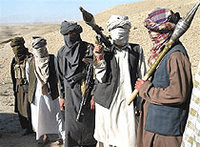America may not be losing the war in Afghanistan, but it is also not winning. Neither is the U.S. approach in neighboring Pakistan making friends or preventing new recruits from crossing the border to kill U.S. and other NATO troops. What then is the best way to promote peace and security in the greater South Asia region, home to nearly half the world's population and several nuclear-armed states? The challenges involved in confronting these threats -- which means fighting extremism in both countries, rebuilding governance in Afghanistan, and supporting a weak democratic government in Pakistan -- dwarf the past two decades of global state-building activities combined and are too big to be tackled alone. For the past few months, Joint Chiefs of Staff Chairman Adm. Michael Mullen and U.S. CENTCOM commander Gen. David Petreaus have been leading U.S. government-wide efforts to develop a "comprehensive strategy" to deal with this pressing issue, while President Obama has appointed Ambassador Richard Holbrooke to address the multiple diplomatic challenges of the region. To succeed, a strategy must have four elements: the innovative use of all the tools of U.S. foreign policy, including development, diplomatic, and military activities; the genuine inclusion of America's key allies; the coherent engagement of regional powers, including India, Iran, China, Russia, and Saudi Arabia; and, most importantly, ownership of the new approach by the people and the governments of Pakistan and Afghanistan.
Getting It Right in Pakistan and Afghanistan

